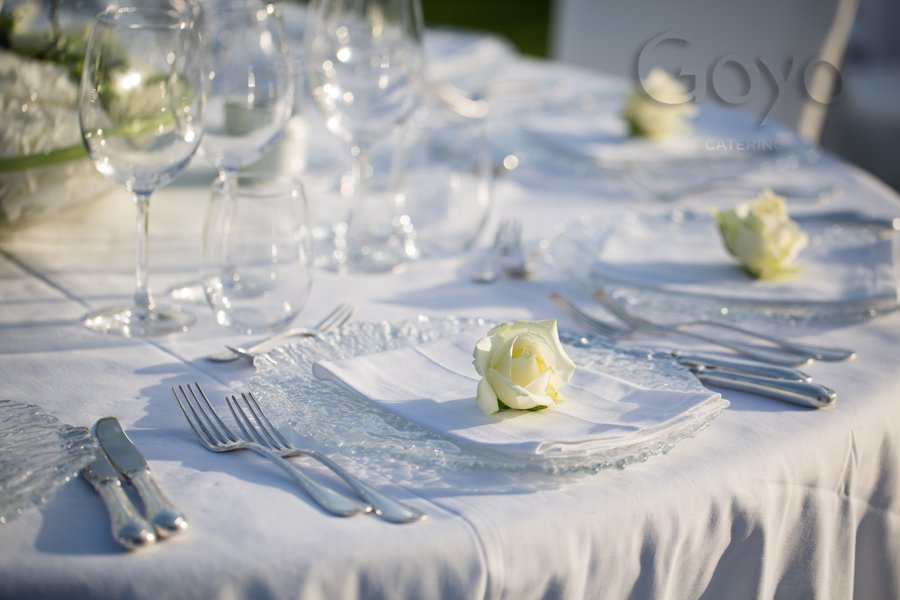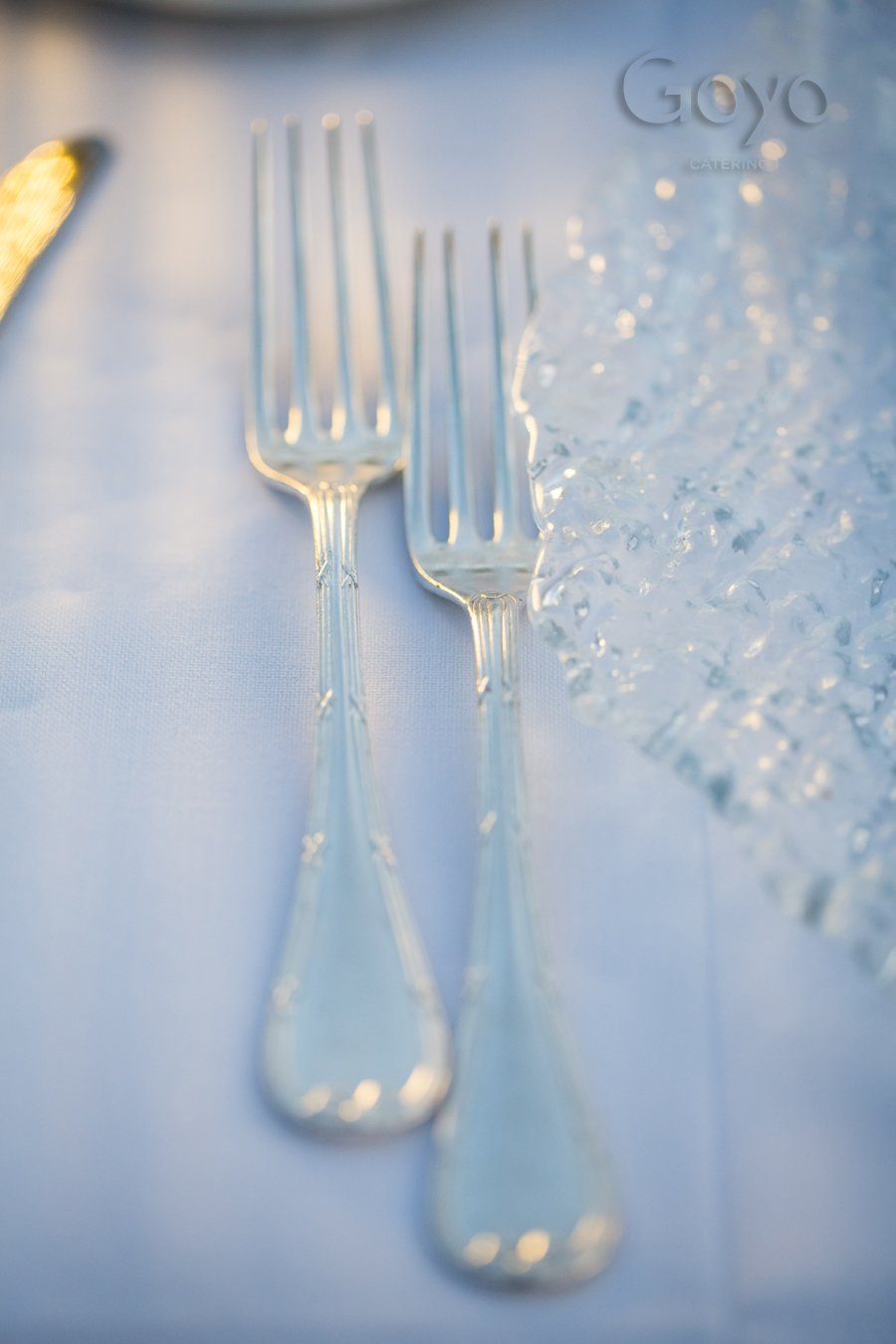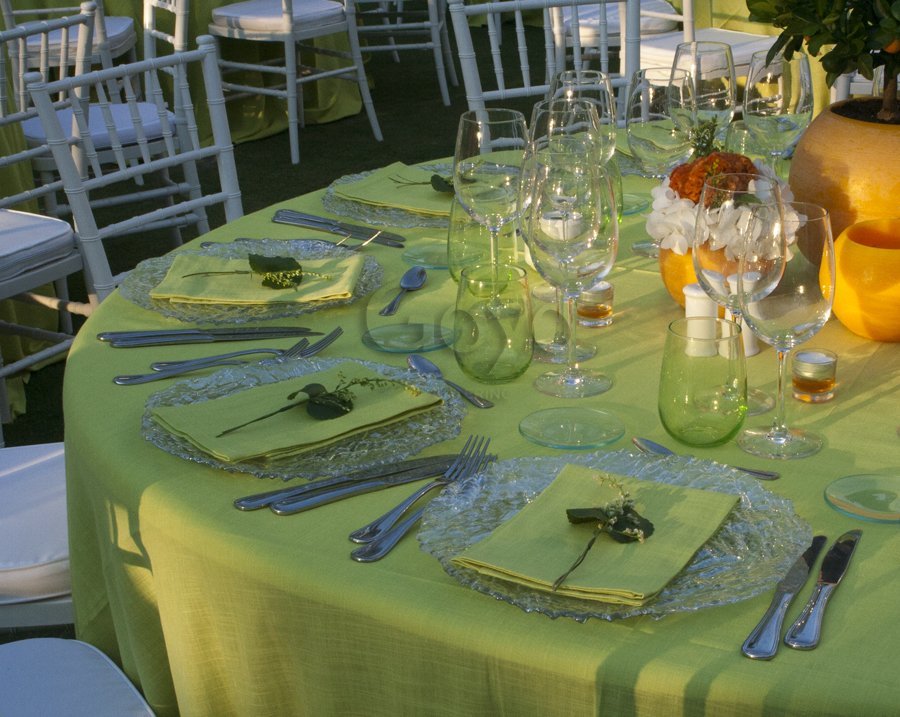Silverware is fundamental in any catering party, although they not always existed as we know them today. Next we explain some curiosities.

Table setting in gray by Goyo Catering.
At first, silverware was invented to help digest food. We have known prehistoric elements but really they became popular in the Middle Age. Knife was the first and legend says that Richeliuwas who invented it. To distinguish a knife from other weapons some kings like Charles IIIdidn’t allow its use in the streets. The spoon’s origins on the other side are less accurate and the fork’s history is the most recent.
Maybe the first spoons were shells used by primitive men. The name in spanish ‘cuchara’ comes from Ancient Rome where they used something called ‘cochlea‘. This could be used both as spoon or fork.

Silverware in silver. | Goyo Catering (2013)
Until 19th Century spoon and knife were the only elements used and they were mainly made of wood for the lower classes.
The fork came in early 11th Century to Venice from Constantinopla with Theodora, daughter of Emperor Bizancio. It was considered a product of the devil and its use was a scandal. At the time, they were made without curves and with two ends. This made them more difficult to use. This is why the fork dissappeared from Europe for more than 300 years until Catherine Medici in her wedding with Henry II of France brought them back as a fashion at the French court in 1533.
In the 17th Century the third end was generalised. In Italy the fourth end was added to adapt tospaguetti. Finally in early 18th Century the fork that we know today was made in Germany.
As for its presentation, there is a basic rule that consists in the limit of number of silverware you can present at a table. There can’t be more than three pieces in each side. When more are needed they will be changed throughout the meal. Otherwise the table would become very busy and it will loose appearance.

Table setting in green. | Goyo Catering (2013)
Our events show a variety of styles according to each of our clients. Although silver is mainly used in weddings, for example, other pieces are starting to be introduced with more colours. The variety is larger.
